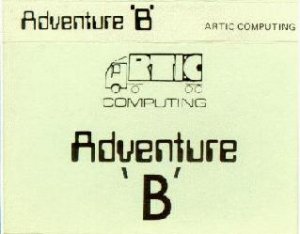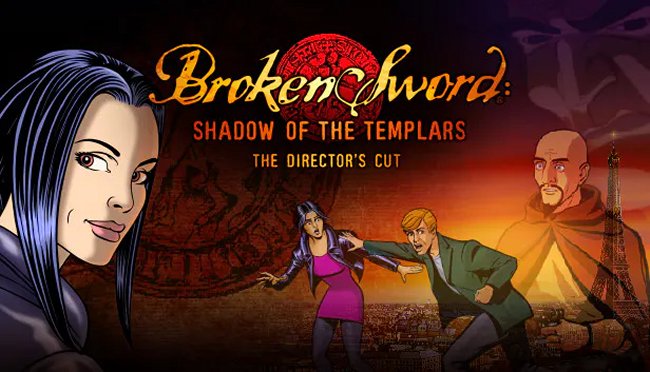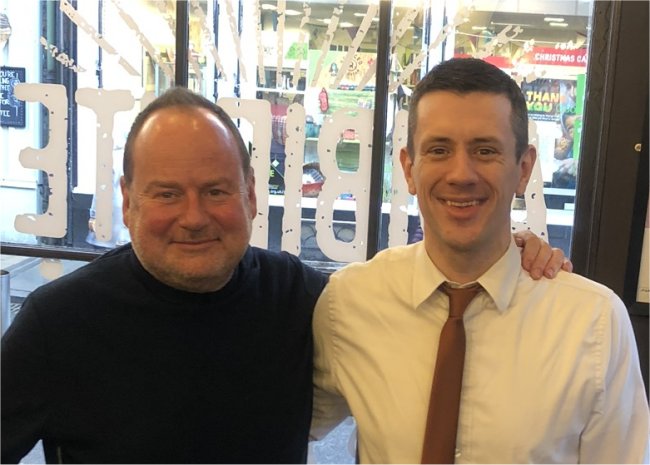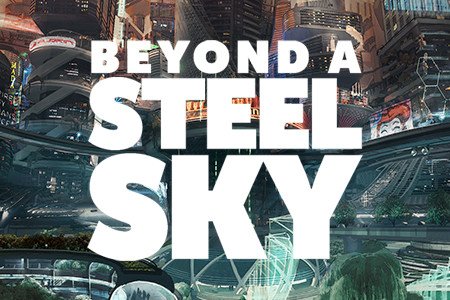YORK, ENGLAND
January 3, 2020
STRANGER: Charles Cecil
LOCATION: Ambiente, 14 Goodramgate, York, England
THEME: Learning the history of adventure games with the co-founder of Revolution Games
It all starts with Space Invaders.
Charles Cecil and his friend Richard Turner spent many nights in their twenties playing the arcade game at pubs across the Yorkshire counties in England. When one pub closed for the night, they’d race to another that was open later. They couldn’t get enough of the concept of video games. And that excitement ultimately led Charles to open Revolution Games, which boasts millions of sales in the adventure games genre.
But it’s a lot more complicated than that, with a tale that involves dodgy financial advisers, the Knights Templar, teaming up with Apple, multiple instances of the supposed death of adventure games, dystopia, crowdfunding, and establishing a niche in the industry with success that makes Charles optimistic for the future. The same excitement and awe he felt about Space Invaders he still feels every day making games.
And he’s happy to tell his story over a lengthy lunch.

We’re meeting in York, a city in North Yorkshire where Charles lives and Revolution has its main office with a core staff of about 15 people. It’s located in the Shambles, a picturesque cobbled street with timber-framed buildings dating back to the 1300s that’s popular with tourists. “It’s great to look out the window and see people and kids, I hate working in a sterile environment in the middle of trading estates,” Charles says.
Revolution focuses on developing narrative-driven adventure games that typically have the player control a character moving around a world solving puzzles that further the story, making it a cerebral alternative to sports or action games.
Before lunch Charles did some work on the story document for Beyond a Steel Sky, which is a sequel to the adventure game Beneath a Steel Sky released in 1994. The original game put the player in the role of Robert Foster, a man trying to uncover terrible secrets in a dystopian metropolis, and became a cult classic. The sequel sees Foster returning to that city, which triggers an elaborate immersive story.
It’s a tale outlined in the story document, which is dozens of pages that Charles calls “the bible” for how the plot should unfold. That’s paired with the design document which is the technical component about the inner workings of the game and how the puzzles are done. “They are separate but complementary, so if you come up with a really nice design the story changes to reflect that, or if there’s some really dramatic story moment then the design has to reflect that,” says Charles, adding that he “jealously” guards the story document because its narrative set-up and payoffs will make or break a game’s success.
And so this morning he played some sections of Beyond a Steel Sky and updated the story document, answered emails, then made the short walk to meet me at the tapas restaurant Ambiente.

Charles is a regular at this venue, which evokes a Spanish plaza café with its décor of walls painted a soft yellow and wooden chairs and tables.
While we browse the menu, I ask Charles how close the game is to completion. This weekend he plans to play the game from start to end for the first time, and then “the next big step is making sure all the sections of the game connect and the story is conveyed.”
He’d love having some free time to indulge his hobbies like rowing or traveling, but as I’ll learn during our meal Charles throws all his energy into Revolution’s games. And his wife also works at the company as a founder and executive producer, so they can trade stories about packed schedules. The couple haven’t had a holiday in a long time while work continues on Beyond a Steel Sky, but Charles accepts that trade-off because it means he can make the possible game for players. And it’s a dedicated approach he’s taken since starting in the games industry years ago.
His long career has a common through-line: Charles wants to make revolutionary adventure games.
Born in 1962, Charles grew up in the Belgian Congo before moving back to London, and went to university in Manchester studying engineering manufacture and management. It’s at that time he met Richard, who was already an avid fan of computers and games.
“I had tinkered on a computer but never seriously, but Richard was an electronic engineer,” he says. The two bonded over their love of Space Invaders, but it eventually became more serious when in 1980 Richard told Charles he had launched a software development company Artic Computing in Hull, East Yorkshire.
Richard invited Charles to write an adventure game for the business. “He said, ‘You like telling stories, why don’t you write one?’”
“I guess I liked making things up,” Charles says with a smile. And so in 1981 he developed the game Adventure B, a title that’s not exactly a surprise given that Artic’s first adventure was titled Adventure A. Although he’d never written a game, he didn’t find it daunting simply because there was no major adventure games industry at the time, so no precedents that he felt bound by in writing his first software.

The game put the player in control of an explorer treasure hunting at an Inca temple, and was text-based meaning the player typed in what they wanted — for example “go in door” or “pick up rock,” and certain actions would move the story forward. Although the design was basic it hints at Charles’ long-running interest in uniting history and globetrotting with an exciting tale and compelling gameplay.
Adventure B, and others developed by Artic, enjoyed great success on the Amstrad, Sinclair and Spectrum computer systems. Richard struck a deal with the major British retailer WHSmith to sell the games, further expanding their reach. Charles laughs when he recalls Artic’s early days when he and Richard, still pursuing university degrees, had to hold business meetings with purchasers using public payphones.
Charles officially signed on as a director of Artic, and says the runaway popularity of the company’s games made their efforts seem “extraordinarily easy.”
It wasn’t all smooth sailing, as he recalls the company at one point having a “very dubious accountant” who would find ways to downplay profits for tax purposes, or dream up outlandish schemes to make money that would have either led to jail or bankruptcy. “And there was another guy who said he’d take some money we needed to send to America and he managed to convince Richard to give him the money to take to America and pass on and ‘save charges’ — that money was never seen again.”
Artic closed down in 1986, but Charles continued to work in software development, ultimately launching Revolution with former Artic colleague Tony Warriner and programmer David Sykes in March 1990. The company was originally based in Hull but moved to York in 1994 where’s it operated ever since. Charles praises what he sees as the friendlier north of England compared to London’s rat race, recalling how he was glad to study in Manchester then work in Hull because it kept him away from the capital city at that time.
He mentions former Prime Minister Margaret Thatcher with an eye roll and laments how her policies in the 1980s enabled greed and the quest for money. “What she created indirectly in London was a bunch of dreadful yuppies whose primary objective was to brag about how rich they were — even if they weren’t. It was a dreadful, dreadful era,” he says, and was happy to not live there at the time.

Revolution’s first game was Lure of the Temptress in 1992, about a peasant trying to overthrow an evil sorceress. This was a point-and-click adventure, so-called because players would use their mouse to move the character around the screen and click to interact with items and other characters. In the 1990s these games enjoyed what many consider their first peak, with titles from other developers like LucasArts and Sierra Club selling hundreds of thousands of copies to eager gamers around the world.
In 1994 Revolution released Beneath a Steel Sky that would become a cult classic, followed in 1996 with the release of Broken Sword: The Shadow of the Templars — a game that would launch an adventure franchise for which Revolution gained new attention, and which has sold millions of copies of its various installments combined.
The game centers on American tourist in Paris George Stobbart as he is drawn into a globe-trekking adventure that centers on a mystery tied to the legend of the Knights Templar. The subsequent instalments in the series — there are five to date — all touch on religious history as part of the plot. Charles enjoys the “serendipity” of exploring the past to make his games interesting. “It’s great to find bits of history and actually use that to tell a story and make a point,” he says, noting that it’s an idea adopted later by the likes of Dan Brown in his book The DaVinci Code. “We were there first.”
Broken Sword was an objectively great game; witty dialogue, ingenious but not frustrating puzzles, rich graphics and a compelling story whose pace ratchets up as the mystery deepens. It unravels like a movie the player is controlling, and that’s by design.

The game gained a huge following in part because it was the result of Charles’ cinematic approach to adventures. Charles was already zealous about having a perfect story document, and devoted a bigger budget to producing a game whose beautiful 2D graphics and top-quality voiceover talent could rival a Hollywood studio’s animated feature at the time. But the game had the edge by letting the player directly control and trigger the plot, rather than watching a story unfold passively in a cinema.
“It’s much, much, much more complex writing a video game than it is writing a film because we have all these constraints and the story is conveyed through the gameplay,” Charles says. “We need to create interesting characters and compelling narratives, but the interactivity adds an extra dimension. You should be able to read a film script and know exactly how good that film could be. In a game it’s all pretty much in one person’s head and the challenge is making sure it lives up to that vision and potential.”
It’s an easy pun to write, but Revolution’s first two games were revolutionary. The company designed a software engine Virtual Theatre that broke ground by allowing characters in a game to exist and take actions independently and react to the world around them, rather than being static things for the player to interact with. “This was quite rare and creates unexpected outcomes which the characters in the world respond to, and that ties in to the adventure and what’s blocking you from progressing,” Charles explains.
At that time in the industry, sales mostly occurred through a chain that disconnected developers from the people playing their games. “For developers their primary customer was publishers, and publishers’ primary customer was the retailers, and the retailers’ primary customer was the gamers. So apart from reviews we read in gaming magazines we had absolutely no sense or feedback from the gamers whatsoever.”

Unfortunately, while the team at Revolution proved they knew what they were doing, the publishers who acted as the gatekeepers for video games sales did not. And this created tension when it came to developing Broken Sword sequels.
In the late 1990s there was a sudden uptick in the idea that 3D would be the future of video games, and that adventures were facing an expiration date.
“We were under huge pressure to move to 3D,” Charles says. He recalls the head of Revolution’s then-publisher Virgin calling a meeting and telling him to stop writing adventure games because he’d found the future of gaming. “And he showed me a game called Creature Shock. And have you heard ever heard of it?”
I shake my head, bemused.
Charles laughs, and tells me it was a first-person science fiction shooter game that promoted its use of 3D. “Very few people have heard of it. But what publishers were saying was that (1) the PC was dead, (2) adventures were dead, and (3) the future was 3D. But the problem was that none of these people actually played games.”

While Charles was trying to use cinematic concepts to enhance his adventure games, major publishers at the time “kind of wished they were in film” and approached the industry that way, with Virgin even relocating to Southern California to be near Hollywood. This led to them ordering countless games from developers that were never completed, in effect like a small movie studio greenlighting a huge number of low budget projects in the hope that one might be the next blockbuster. This gigantic development slate had no tangible financial risk to the publishers because so long as they never officially canceled the titles, they could still claim projected profits from them in accounting. “So these publishers found themselves with this incredible legacy of really bad games they couldn’t cancel. It was part of the dreadful legacy of the 80s: it doesn’t matter how you make money, as long as you can get away with it.”
He pauses as he reaches for a plate the waiter sets down. “Will you have some of these? They’re very nice,” says Charles.

He slides across the plate of patatas bravas; triple cooked sagitta potatoes served with a side of aioli and spicy tomato sauce. Very nice is a perfect way to describe this dish with its rich sauce that makes it hard to resist quickly devouring them all.

There’s a lot of food for our lunch; six dishes in total representing a great selection of Ambiente’s outstanding menu. Next up is Charles’ order of some fantastic sobrasada and jamón croquettes served with pimento aioli.

And a salad of mixed leaves, fresh herbs, cucumber, peppers, tomato and shallots finished with feta cheese served with house-made salad dressing.

I’m having a bowl filled with slices of caramelised chorizo and potato.

Second on my to-do list is a generous portion of shredded chicken mixed with Moorish spices and served on a flatbread with pickled onion.

And finally a daily special; braised beef shin with a celeriac mash. It’s on the menu as a one-off during the holiday season but it’s so delicious it should be a permanent item.
While we work on the six plates and award the food top marks, Charles continues the story of Revolution, which pushed ahead with adventure games even when the genre seemed on life support.
With such a prominent role in the computer games industry — he was made Member of the Order of the British Empire in 2011 for his services to the sector — Charles has seen first-hand the rise and fall and rise again of his beloved adventures, including the expansion of the Broken Sword series and its ever-growing fanbase.
The second game in that series, The Smoking Mirror, came out in 1997. The third, The Sleeping Dragon was released in 2003. Charles tells me the third game “conservatively” made of profit of about $5 million for the publisher THQ. But Revolution was losing money because of the “broken” developer-publisher relationship that put all the costs on developers, losing about $250,000 on the game.
Revolution came through the 3D mania relatively unscathed, though The Sleeping Dragon used 3D graphics and the company also used the technology for a new original came In Cold Blood. The latter was a spy adventure set in the near future, but Charles laments the fact that the publisher Sony pitched it as a metal gear fighting game. “It had nothing like that,” he says, shaking his head. “It was an adventure game with a bit of action. But even so, because it was published by Sony it sold quite well.”

But after the 2006 release of the fourth Broken Sword game, Angel of Death, he says, “We were in this position where the games we had written were being successful and they were making an awful lot of money for the publishers and the retailers, but we were actually losing money on them. We had to cut right back, close our office, and only a few of us stayed on. It was very difficult to see where we could go because we were servicing out debt and there seemed very little opportunity to make any revenue.”
Retailers were also giving more of their limited sales slots to the booming console market including the PlayStation and the Dreamcast, and fewer to PC. “Publishers had no interest in commissioning adventure games because they weren’t 3D, they were perceived as an old fashioned genre, and retailers wouldn’t take them,” Charles recalls.
“Adventures were effectively dead,” he says.
Then, and I hope Charles forgives me repeating the lazy pun, Revolution’s fortunes changed due to another revolution: the move to selling games digitally.
In 2008, Charles received a call from Apple’s Paul Burford, who played a huge role in promoting the phone to new users. He was disappointed with the quality of games on the iTunes store at the time and thought Revolution’s productions would be a better fit. Apple would not provide funding but would provide promotional support, for example spotlighting a game as a free daily download.
Charles was excited, invigorated by the chance to overhaul the games market. It was a way to break up the convoluted steps to market bedeviling Revolution, letting them sell direct to customers. “What Apple did overnight was put a level playing field between developers and publishers,” Charles says. “The publishers’ model absolutely didn’t work under this new regime.”

Publishing companies were desperate to prevent the change, but Charles saw it as a breakthrough that had to happen. “I remember talking to one publisher and them saying they were proposing an area on Apple for publishers and an area for developers, and Apple of course turned round and said, ‘Why would we do that? We don’t care if it’s a publisher or developer selling.’ And the publishers were furious,” he adds with a laugh. “Because they had controlled the route to market, they controlled publishing, they controlled the relationship with retail, so we had no way of going directly to our audience. Suddenly we had a direct relationship and the publishers were outraged.”
Charles welcomed the chance to sell and talk directly to the fans playing Revolution’s games, treasuring the ability to get their feedback and learn why they loved the adventures. The company worked on “remastered” versions of the first two Broken Sword games and Beneath a Steel Sky for this new Apple market, and were rewarded with instantly strong sales. The first Broken Sword game sold roughly 160,000 copies within a year of release on iTunes, while Beneath a Steel Sky reached about 70,000 in its first year.
Most importantly, that direct line to game players gave Charles valuable new insights, including discovering the ardent fanbase for his company’s games. “We did a launch event for Broken Sword at the Apple store in London and huge numbers of people game, we were absolutely blown away at the level of passion and excitement. And since then I’ve taken the relationship with our community really seriously,” he says. The overwhelming support for Revolution would even help with producing the next Broken Sword game.
“We have such a passionate group of people who will advocate on our behalf and talk about our games so we’re very lucky. I read with horror about these toxic communities, touch wood ours are wonderful,” Charles adds, banging on the table with a knuckle.
That dedicated fanbase helped with a Kickstarter that Revolution experimented with in 2012 for their next game, Broken Sword: The Serpent’s Curse, which returned to using 2D graphics. The effort raised roughly $850,000 in crowdfunding to assist with production of the game, and it sold well and garnered positive reviews.
Charles is grateful for the financial support from his fans but describes the Kickstarter process as “an awful lot of work,” as those investors who contributed higher amounts secure certain rewards like early access to playing certain parts of the game. “Some people have paid hundreds of dollars and quite rightly they expect a great service, and that takes a lot of time,” he says. “I loved the experience but I think it would be better to do later in the development process when there’s more to talk about.”

That development process continues today with the ongoing work on Beyond a Steel Sky. I ask how Charles’ work-life balance is at the game nears the last few months before release and he concedes “pretty bad,” leaving him minimal time for his hobbies such as rowing or traveling to conduct research for his games. But he adds, “I’ve got no complaints.”
He still finds time for holidays, including a recent trip to San Francisco where he swam from Alcatraz island to the mainland along with one of the owners of Ambiente. Charles shows me a video in which he’s standing in a wet-suit in the waters of the San Francisco Bay, waves crashing in all directions. It looks beyond freezing cold, but he appears delighted.
And lunch with him is also delightful; more than two hours chatting with a charming man who’s a great conversationalist with fascinating stories.
For now, his main focus is finishing Revolution’s latest game, and it’s a family affair with his wife Noirin Carmody serving as the company’s executive producer. “My son is a game designer and my daughter is a video editor, so they’re both in the same sort of area, so that’s really nice,” Charles adds with a smile.
Although it’ll be another late night at the office, he says he doesn’t mind. “It’s insane and I haven’t had a weekend off or a holiday but I’m not complaining. Adventure games are very intense and very hard to make. If we were writing simple games life would be a lot easier, but then again, we wouldn’t have the passionate fans that we have.”
Pingback:» Beneath a Steel Sky The Digital Antiquarian
Pingback:» Broken Sword: The Shadow of the Templars The Digital Antiquarian
Pingback:» Televising the Revolution The Digital Antiquarian
sefzlx
lziw60